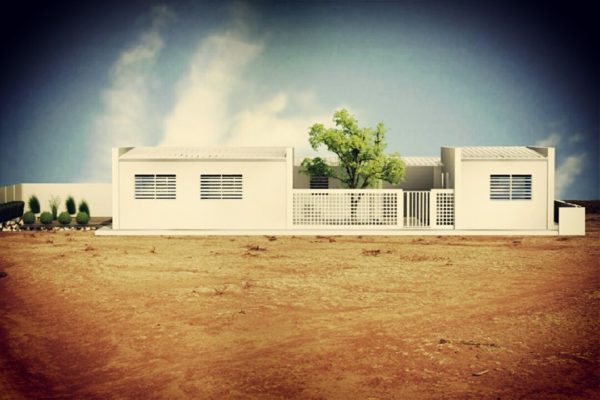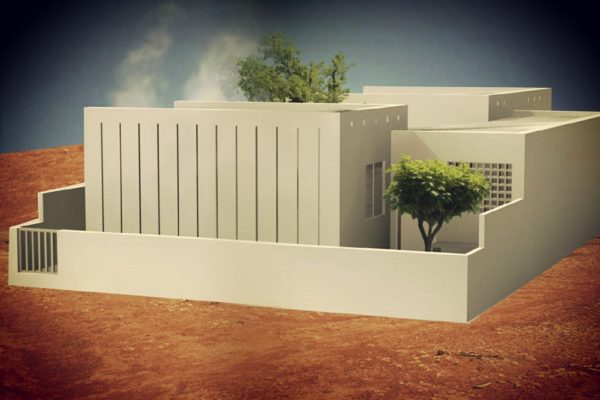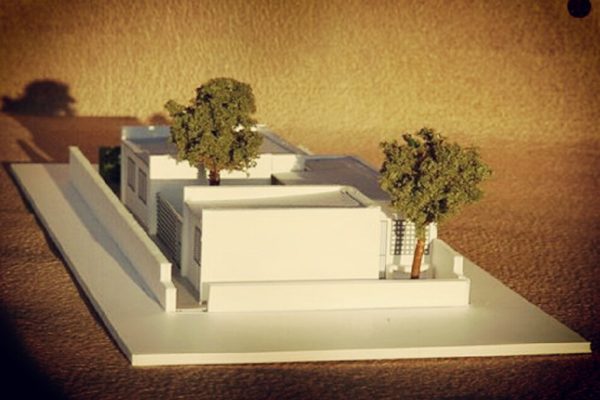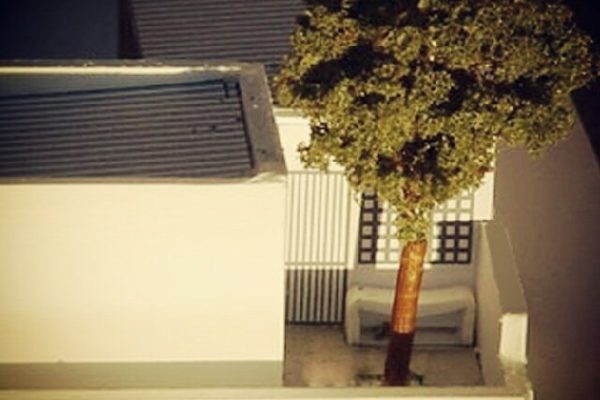Data : Maio de 2010
Programa :
– Concepção de protótipo de unidade familiar que origine um pátio ;
– Baixo custo de construção ;
– Criar de um modelo replicável ;
– Propôr uma solução sustentável.
Conceito :
“An entire past comes to dwell in a new house…and memories of the outside world will never have the same tonality has the ones from home, and by recalling these memories, we add our store of dreams…In the life of a man, the house thrusts aside contingencies, its councils of continuity are unceasing. Without it, man would be a dispersed being.” (Bachelard, 1969)
A capacidade de habitar um espaço surge como consequência das limitações do indivíduo. “Habitar” constitui uma metáfora do nosso próprio universo e a casa onde vivemos torna-se uma expressão da nossa própria identidade, indo muito além de uma marca social. A ideia de “casa” fica inevitavelmente ligada ao sentido do “eu”, mas também ao de autenticidade, abrigo físico, psicológico, emocional, e espaço de memória.
Na cultura Africana, o pátio interior é considerado como uma parte da casa, tão importante como qualquer outro, e embora algumas das suas funções estejam relacionadas com o “interior”, as relações sociais encontram expressão sobretudo no espaço exterior.
Deste modo, a solução proposta procurou explorar esta relação entre espaço interior/exterior, individual/colectivo, assim como a questão da capacidade de auto-construção, pelo recurso a materiais adaptados ao contexto socio-económico.
Local : Luanda – Angola
Equipa : MR Arquitectos
Date : May 2010
Program :
– Design a prototype of a family unit with a patio ;
– Low cost of construction ;
– Creation of a replicable model ;
– Propose a sustainable solution.
Concept :
“An entire past comes to dwell in a new house…and memories of the outside world will never have the same tonality has the ones from home, and by recalling these memories, we add our store of dreams…In the life of a man, the house thrusts aside contingencies, its councils of continuity are unceasing. Without it, man would be a dispersed being.” (Bachelard, 1969)
The ability to inhabit a space arises as a consequence of the limitations of the individual. “Dwelling” is a metaphor of our own universe. Our house becomes an expression of our own identity, going far beyond a social brand. The idea of “home” is inevitably linked to the sense of “I”, but also to authenticity, under physical, psychological, emotional, and memory.
In African culture, the inner patio is considered to be part of the house, as important as any other, and although some of its functions are related to the “interior”, social relationships find expression mainly in outer space. Thus, the proposed solution aims to explore the relationship between interior /exterior, individual /collective, as well as the question of the capacity for self-construction, and the use of materials adapted to the social and economic context.
Location : Luanda – Angola
Team : MR Architects




